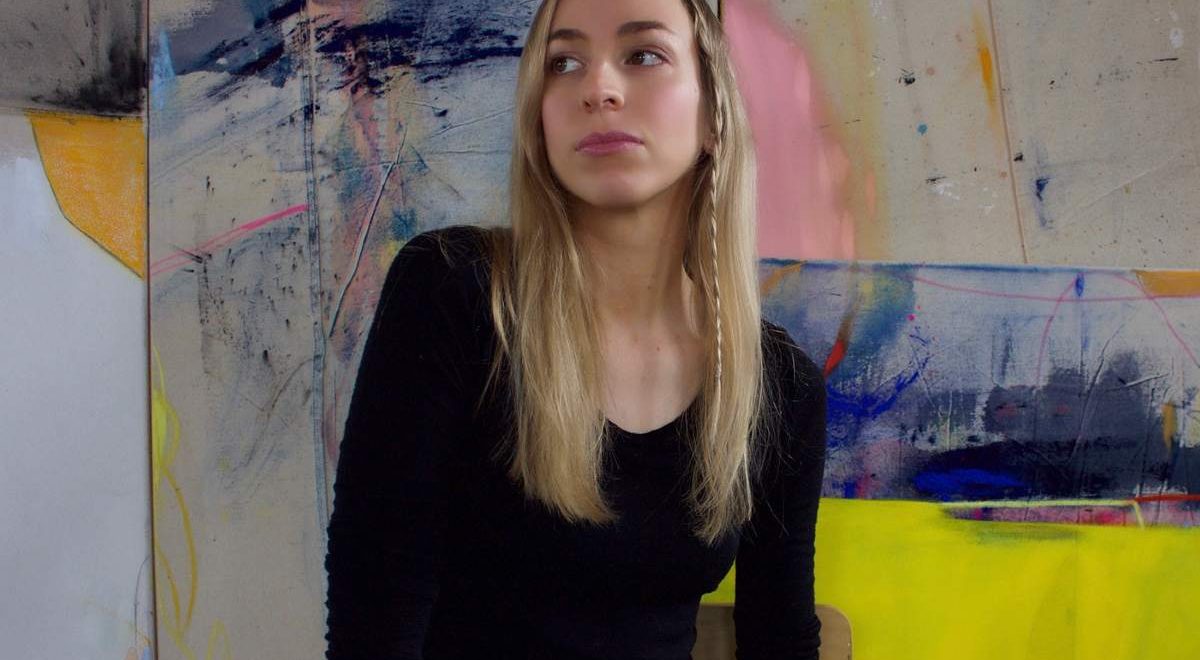My current work is marked by layers of process, as well as the dichotomy between imagery that seems to drift away and live in the present simultaneously.
Contemporary artist Dana James
Contemporary artist Dana James talks about her work in brief chat with Anjali Singh for the Asian Curator.

Artist interview
Please tell us a little about yourself. What brought you to the world of contemporary digital/visual art and how did you start? Let’s talk about the evolution of your practice and medium of art over the years.
I am a native New Yorker and I come from a family of creators. I grew up in an artist loft in Manhattan and have been painting and drawing for as long as I can remember. Art always felt natural to me, and it was a process that offered peace in a chaotic household. I started as a figurative painter, though there was a sense of nostalgia and place in my work from the beginning. As my process developed, I became increasingly interested in material. The boundless possibilities engendered by contrasting textures became the primary theme in my work. Still, as my practice evolved into abstraction, the element of place sustained itself through notions of landscape.
My current work is marked by layers of process, as well as the dichotomy between imagery that seems to drift away and live in the present simultaneously. The use of wax in chosen areas creates a “distance” from the present. Poured over the surface of the paint, it acts as a literal layer of obscurity that speaks to the uncertainty and transience of our memories. This process is offset by bright, temporal colours, where an added iridescent “glow” simulates feelings of glinting water, of phosphorescent dragonflies, of that hazy moment just before sleep, of the magic felt in the vastness of nature as a child. I am fascinated by the notion of shifting light inside the optics of our memories.
Lets talk about your frameworks, references and creative process.
I am most interested in the beauty of contradiction. To me, time painting is time spent discovering symphony in discord. Most of my pieces incorporate materials beyond oil and canvas. I find excitement in the dialogue between diverse elements. I also often choose to work in multi-paneled constructions which expose how lines and edges may clash and yet understand each other all the same. Am also interested in the process of adding and erasing, in cleaning the dirty and dirtying the clean, and most importantly, in leaving hints of that process behind for the viewer to assess. I want each piece to wear its own history.
How do you deal with the conceptual difficulty and uncertainty of creating new work? How do you overcome creative blocks?
Previously, I had often felt a sense of fear or dread at the beginning of a piece when the process held too many unknowns. Now, I welcome the uncertainty; there is an understanding between me and the canvas–that I will acquiesce to It, and it to me. By controlling the process, and yet being willing to let it control me, the work tends to evolve into what it needs to be. Think this is a comfort gained only after many years or painting.
I attempt to overcome creative blocks by leaving my studio to look at work other than my own. I also often spend time writing and reading. Find this exercises a different part of my brain. Writing notes or statements about my work helps to elucidate the ideas behind my work and reinforce certain choices.
Day in the life of a visual artist: Tell us about your art studio, what kind of place is it?
My art studio in Brooklyn is currently set up as a live/work loft. I prefer it this way because it allows me to be immersed in my practice, and ultimately makes me more productive. I am comfortable drowning in my work. This can be overwhelming and it is not for everyone, but I find I’m most effective when I am really living in the world of my work. I do think finding and creating the right space is fundamental to making good work. It is important to invest in a place where the artwork can thrive. To me, this means having abundant, drenching sunlight and and an absence of clutter and distractions.
On a typical day, I try to begin painting the moment I wake up, as this is when my head is most clear. I also find the ritual of organising my studio to be extremely important and I make time for this every day. Of course, painting is never a nonstop process. Taking my greyhound outside and walking around my neighbourhood can be a welcome reprieve from myself and my work. It is easy to get lost in the studio; I find it helpful to go outside and return with new eyes.
What are you looking for in other visual artists work?
I enjoy discovering elements of a piece that reveal an artist’s perception of beauty in the world. I look for the idiosyncratic variables inside each piece that tell the viewer about the person behind the work, about their motivations and desires. Art is an incredibly intimate form of expression. A portrait of the artist always lies in their work and I find that quite beautiful in and of itself.
Before you go – you might like to browse our Artist Interviews. Interviews of artists and outliers on how to be an artist. Contemporary artists on the source of their creative inspiration.












Add Comment